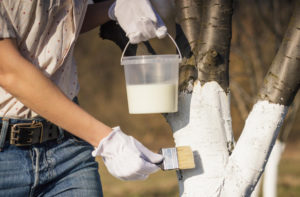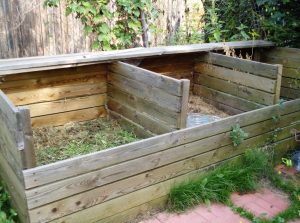
On any country plot of pests are many (of course, I do not mean neighbors in the horticultural Association). Summer residents are constantly improving ways to deal with them, trying to keep the situation under control. But each of us has an uninvited guest registered on the site — a ruthless pest, whose power could not be resisted for many years. Traces of its silent, but aggressive and indefatigable activity can be seen everywhere: on the iron roof and in the dry basement, in most greenhouses and garages.
For her, nothing is sacred — she even attempted to kill a car, and the sight of her destructive activity on her favorite means of transportation will definitely hurt your heart.
What a beast — corrosion
What is this all-pervading trouble that poisons the grace of country life? And we are talking about the Corrosion that accompanies iron (Fe) from the moment of its discovery (12 centuries BC) to the present time. But if this purely technical term may not be known to everyone, then everyone knows the second name of this villainess — Rust. It is about how to protect the country property from this insatiable metal-eater, we will talk in this article.
Especially clearly traces of rust in the country are visible in the spring, when the snow cover comes down, exposing rusty roofs, fences and other metal products.
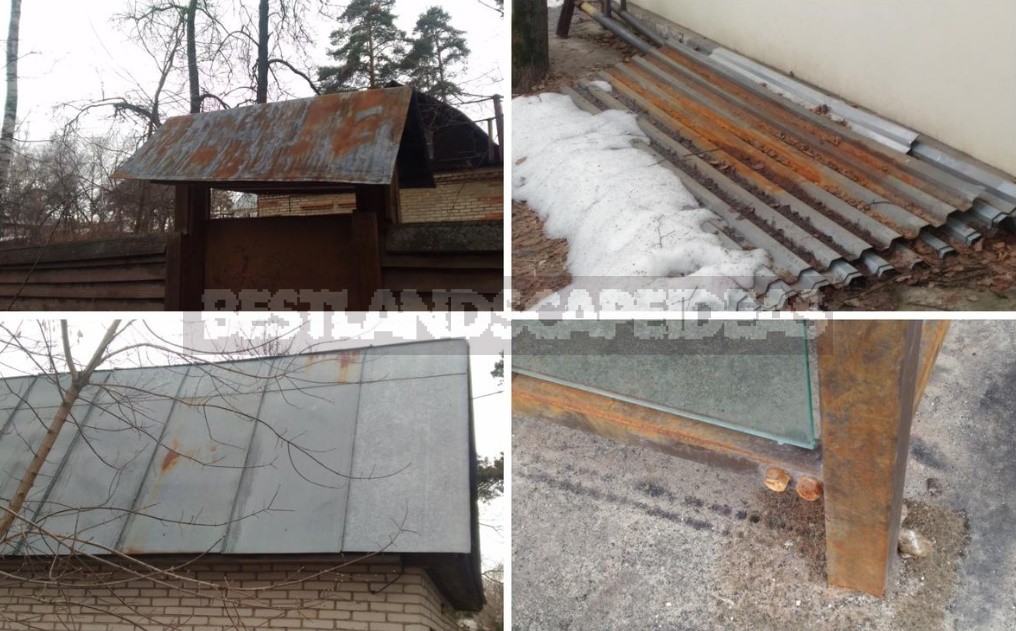
And the author of these lines does not need to go far for obvious traces of corrosion attacks. Below are photos of two plumbing devices that failed due to corrosion, which led to flooding of residential premises. It’s not a pleasant situation, is it? Even worse, it is not clear how to prevent metal corrosion on the internal surfaces of parts in contact with water.
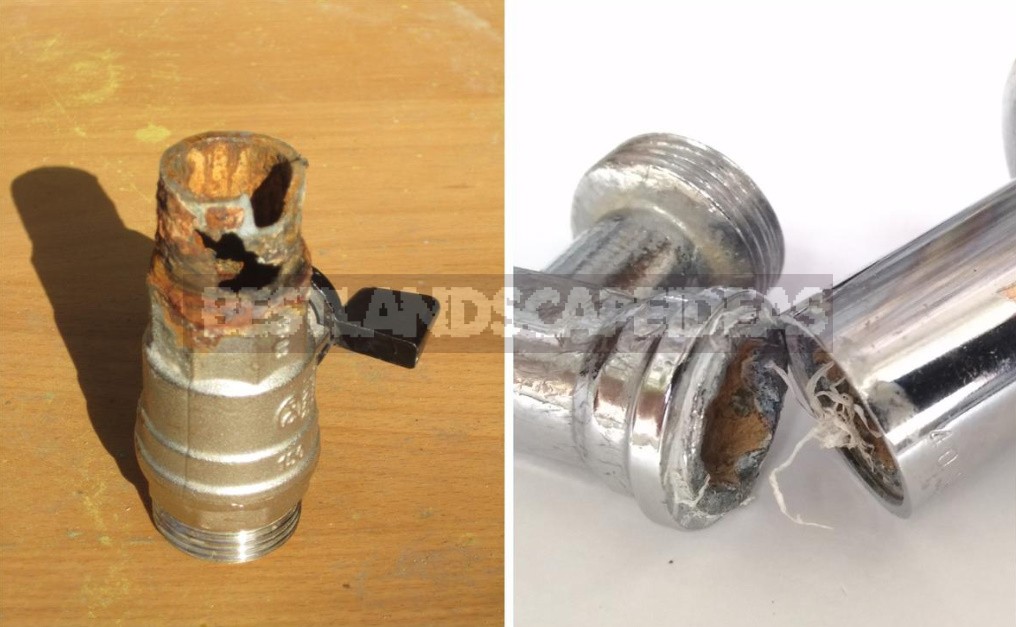
Of course, the purchase of cheap low-quality plumbing at times increases the risk of getting a “surprise” from corrosion.
The answer of science to the arbitrariness of corrosion
Of course, there has long been an irreconcilable war against metal corrosion, in which (we must pay tribute to the efforts of mankind) notable successes have been achieved.
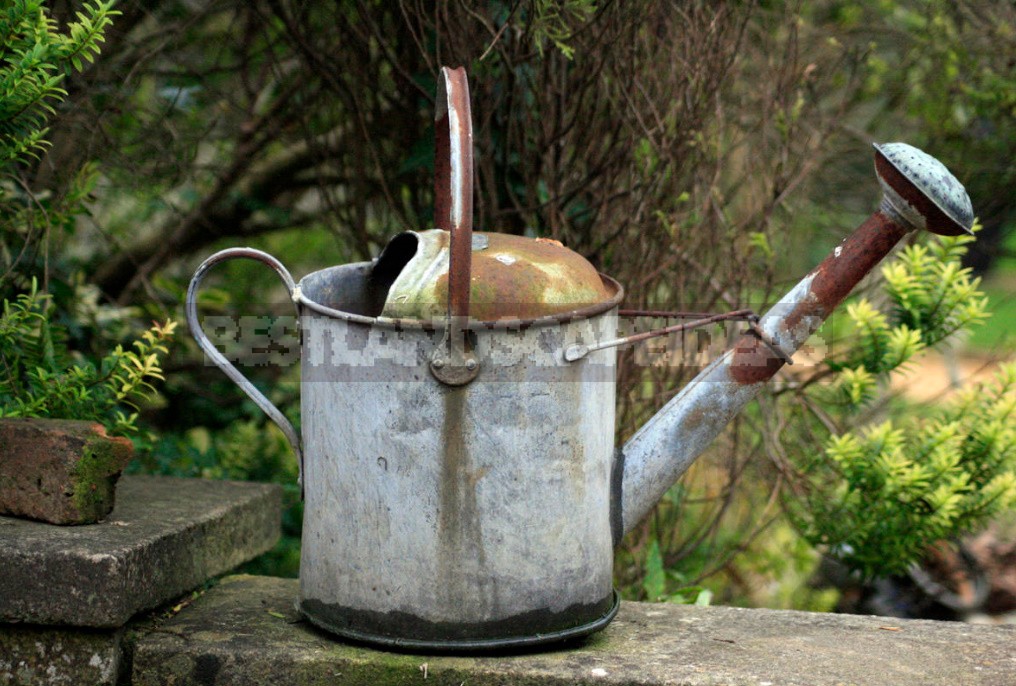
What is the answer to the modern scientific and technical progress of primitive metal corrosion? Various methods of protection are used, one of the most affordable – metal coatings. Distinguish:
- cathodic coatings with higher corrosion resistance than protected metal surfaces (they should not have pores, damage);
- anodic coatings with less corrosion resistance than the protected metal. Dissolving, such coatings protect the metal from destruction.
Protection of iron by hot-dip galvanizing
Who of our summer residents does not know what “galvanizing”is? Of course, everyone has heard the term and seen the silver-colored steel sheets that are used as roofing material in many dachas. But few people know how to make galvanizing. To protect iron from rust, iron sheets (tapes) are dipped in a container with molten zinc at manufacturing plants. The temperature of the zinc melt in them is in the range of + 420…+455°C. A serious production that provides a fairly reliable long-term protection of iron from rust.
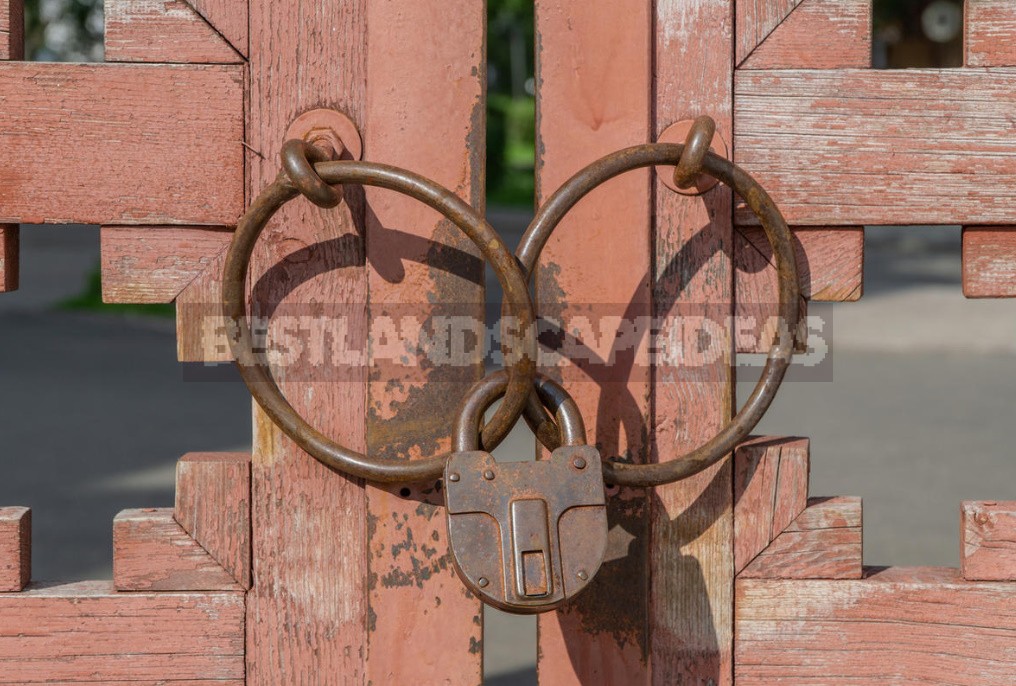
The process is called hot-dip galvanizing, and it was invented quite a long time ago: the method was first described in 1742 by the French chemist Paul Jacques Malouin. There are other methods of obtaining a zinc layer.
Protection of iron by cold galvanizing
In the middle of the last century, specialists created a cold galvanizing technology that does not need high-temperature zinc melt. This technology has dramatically simplified the highly efficient process of protecting iron from rust. Little by little, the purely industrial method was improved, and over time became available to everyone! Just imagine, now every cottager can buy an elegant spray can with this miraculous enveloping composition and independently perform anti-corrosion treatment of iron objects in the country! That is, the Board is found! I know it’s hard to believe, after years of trying to defeat corrosion, but I’ll try to convince you.
A little personal experience
Cold-dip galvanizing technology allows you to produce metal galvanizing with your own hands, which is called at home. For this purpose, special zinc-filled compounds are used. They are applied as paint, but it is not a paint with a high content of zinc, namely a liquid metal (zinc) in the form of paint.
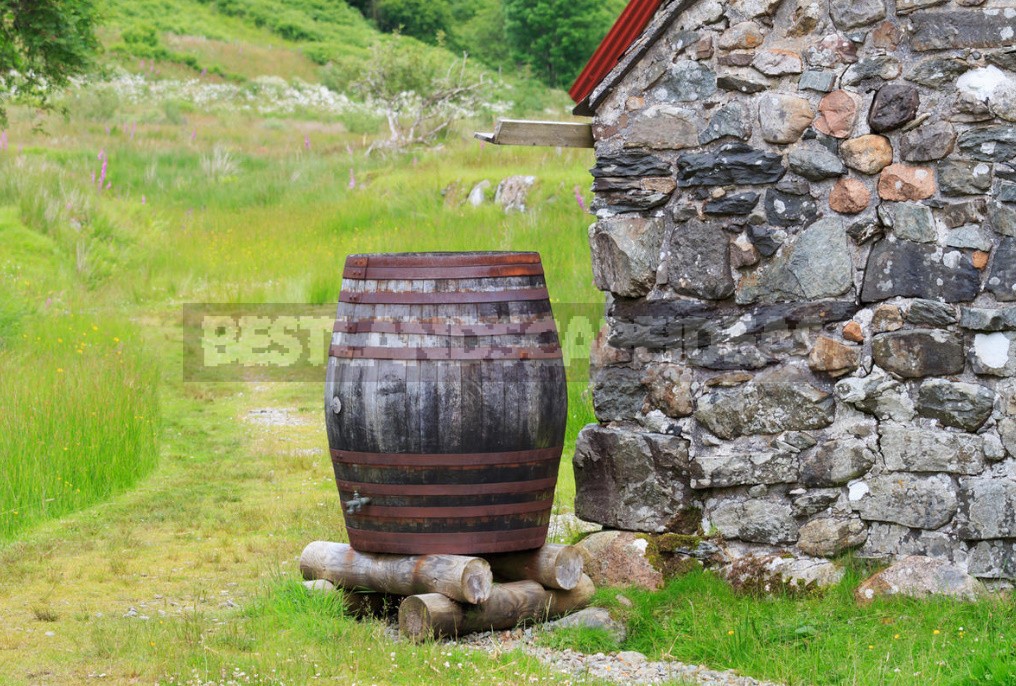
As a worthy example of such a material, I can safely recommend the “cold galvanizing Composition” from a domestic manufacturer-the VIXEN trademark. I have a small (but extremely positive) personal experience with this line-up, so I will tell you about my impressions.
This product contains up to 99% of special electrochemically active zinc. When applied, it forms a strong uniform coating of gray (zinc) color, which:
- provides the metal with reliable cathodic protection against corrosion. Moreover, even if this coating is damaged to the visible metal, the scratches will not rust, but will become white, which indicates an electrochemical reaction occurring on the metal surface;
- it has high elasticity, abrasion resistance, and is not sensitive to shock and vibration. The latter factors are just important when used on car surfaces;
- the permitted temperature range of operation will satisfy the most picky summer resident, as it varies from -60°C to +150°C;
- it can be applied directly to rust, without preliminary surface preparation. I confess: I always treat the rusty surface with a metal brush. To be honest, I can’t even imagine a reason to refuse to clean the surface, except that the cottager does not have the same metal brush. Laziness, too, can not be completely excluded, although, as life shows, this quality is absent from our summer residents by definition;
- the product is available in a small aerosol container, and no additional equipment is required for its application. This is very convenient if you need, for example, to repair damaged parts of the galvanized body after an accident or rust spots on the trailer.
It was on a trailer with traces of rust that I first tried out this compound. There are no comments yet, and a lot of time has passed since the cosmetic repair by cold galvanizing.

Also, just in case, I decided to secure the places in the binding of the heating boiler with zinc plating. That’s when I appreciated the convenience of the small size of the can itself.
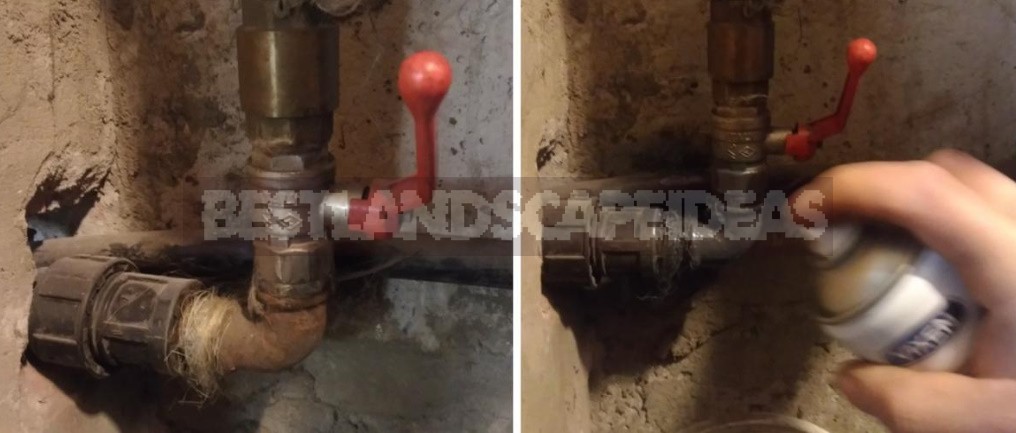
Despite the very dense ligature of water and heating pipes, the torch of the sprayed composition reached all the “dead” points. Moreover, the spray did not” spit”, did not give extra drops: the coating lay flat, without streaks. The desired result was achieved by applying a single layer, from which the logical conclusion follows: “the Composition of cold galvanizing” is very, very economical.
Many readers probably know that the metal structure changes slightly in the places of welds, and there is a tendency to rust formation. Therefore, the weld is a weak point of metal products that must be protected first. Along the way, I will note that a great welder who is justifiably proud of the quality of work performed, it is not a sin to have a zinc composition in his Arsenal. By covering the welding area with it, the master can effectively finish his work and present it to the picky customer.
There were several other points on my garden plot that were waiting for reliable protection from corrosion. First of all, these are welding seams for fixing the sliding gate catcher on the fence post. Without thinking twice, I insulated the entire bolted bracket with liquid zinc. It will be stronger.

Another significant object is the lintel from the corner above the doorway to the bath. It is more than 10 years old, and all hands did not reach to paint it. Of course, first removed the loose rust with a metal brush, paint tape pasted all the nearby brick surfaces, and only then began to spray liquid zinc.

It matched the color of the zinc-clad door.
What else can be digitized
The method of cold galvanizing is actively used to protect metal greenhouse structures from corrosion. In the absence of the latter on my garden plot, I can’t share my personal experience of using this technology on this object. But if you decide to zinc the bearing arches and purlins in the greenhouse without disassembling them, then all the greenery on the beds and the soil itself should be closed in the most conscientious way. You don’t need traces of zinc in your food, do you?
In conclusion, I will add that the product is used very economically: the capacity of the vixen “cold galvanizing Composition” can is 520 ml, after painting the above, its weight has decreased slightly.
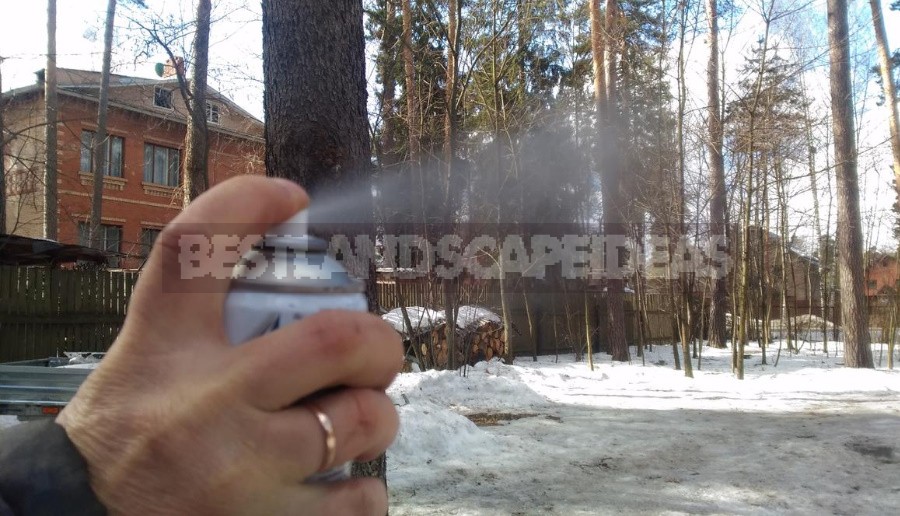
I hope that now that you know an affordable and effective way to protect iron, corrosion will leave your sites in disgrace.

